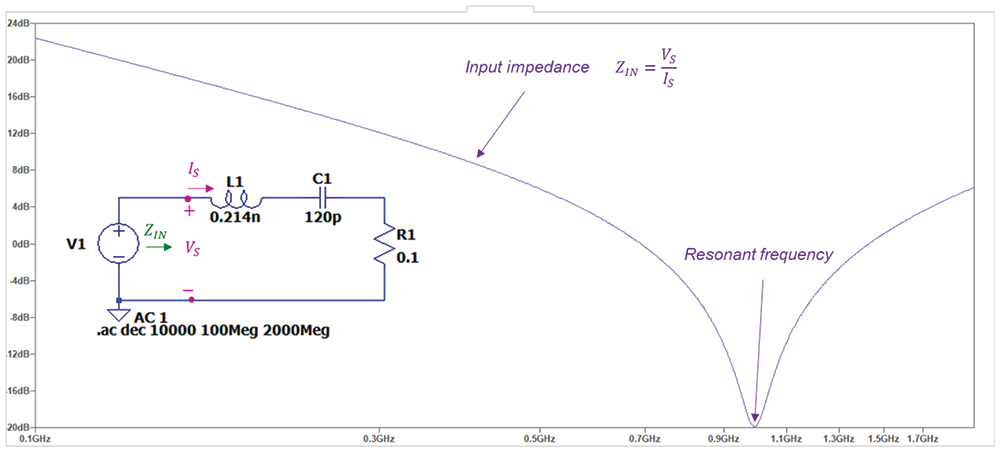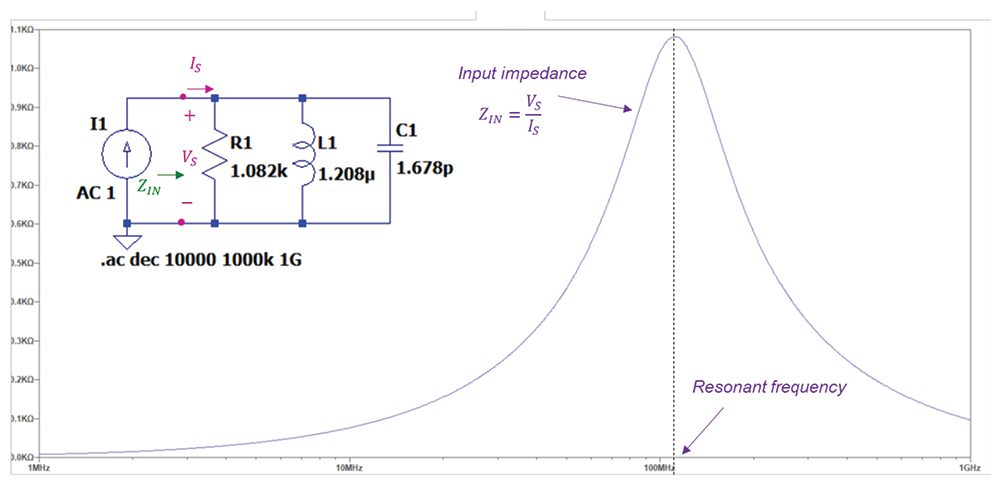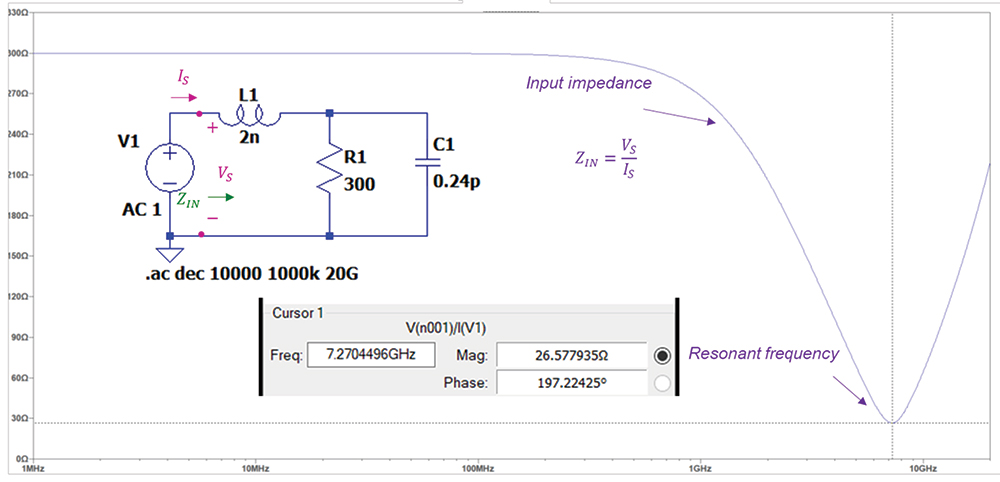Part I: Non-Ideal Passive Components
his article is part of a two-article series devoted to the concept of resonance in EMC. In Part I the fundamental circuit background is presented and illustrated by the resonance phenomenon in the non-ideal models of passive circuit components: capacitors, ferrite beads, resistors, and inductors. Part II (to appear in the next issue) describes the resonance in the decoupling capacitor circuits.
Actual circuits differ from these classical configurations; in addition to the intentional discrete reactive components, they contain distributed parasitic inductances and capacitances. Nevertheless, the study of these basic RLC configurations provides an insight into the more complex topologies and their behavior. Let’s begin with a series RLC circuit.
Since the study of resonance is performed in the sinusoidal steady-state, the voltage and current, in Figure 2, are shown in the phasor forms, and the component values are replaced by their impedances [1].
In order to introduce the concept of resonance, let’s calculate the input impedance to the circuit.










The resonant frequency, ωr , is a frequency at which the voltage and current phasors are in phase (with respect to the same two terminals of the circuit).

At resonant frequency, the magnitude of the input impedance is minimum. Let’s illustrate this using a circuit model of a nonideal capacitor [2] and plotting its input impedance. This is shown in Figure 3.
Let’s calculate the input impedance to this circuit.





This circuit corresponds to a non-ideal model of a resistor [2]. Let’s calculate the input impedance to the circuit.







Note: the simulation model in Figure 7 is used only to show that the hybrid series RLC circuit with the component values shown is indeed resonant. This simple model is not valid beyond 2 GHz frequency, and thus, beyond 2 GHz, the simulated impedance plot and the value of the resonant frequency do not reflect the results that would be obtained from the laboratory measurements.
This circuit corresponds to a non-ideal model of an inductor [2]. Let’s calculate the input admittance to the circuit.






- Bogdan Adamczyk, Foundations of Electromagnetic Compatibility with Practical Applications, Wiley, 2017.
- Adamczyk, B., Teune, J., “Impedance of the Four Passive Circuit Components: R, L, C, and a PCB Trace,” In Compliance Magazine, January 2019.
- https://www.analog.com/en/analog-dialogue/articles/ferrite-beads-demystified.html









